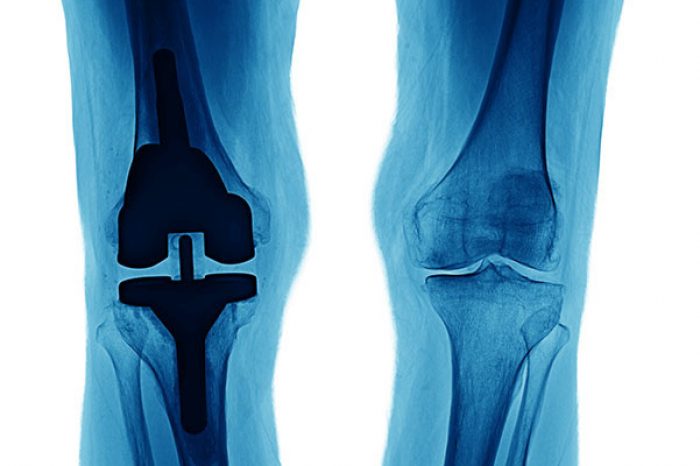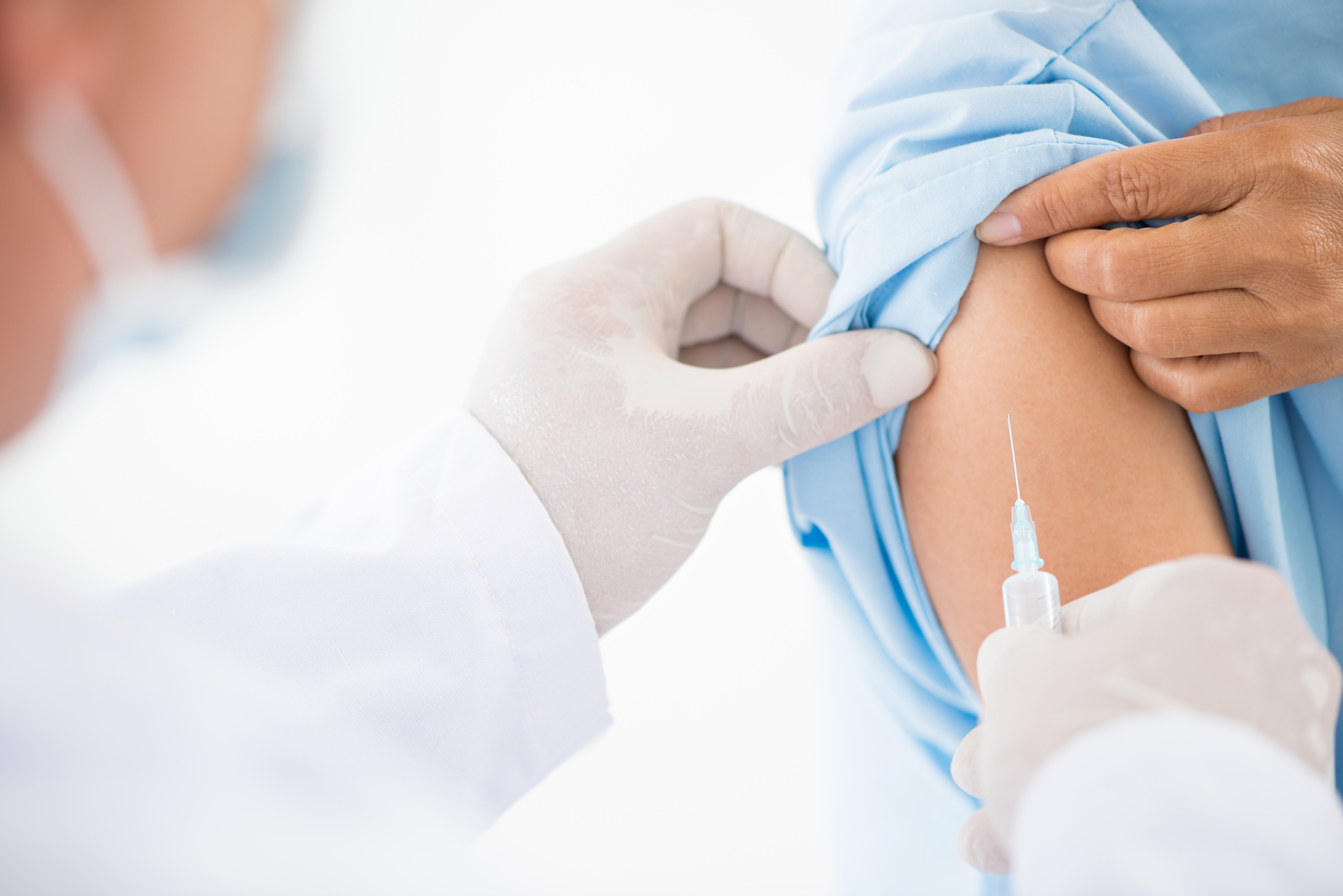
On March 11, 2020 the World Health Organization declared the outbreak of a pandemic and global health emergency due to the COVID-19 virus. There was initial concern that corticosteroid injections could alter the immune response. Now there is concern that corticosteroid injections could impact the COVID-19 vaccine.
Can I get a steroid injection to treat pain during the COVID-19 pandemic?
Yes. Based on our current understanding of the effect of corticosteroid and COVID-19 corticosteroid injections are safe and do not impact the body’s ability to fight the virus.
Corticosteroid injections are commonly used for the management of pain in orthopedics, from joint pain due to arthritis, tendinitis/tendinopathy and bursitis. Initial guidelines issue in the United States on March 27, 2020 by the American Society of Regional Anesthesia and Pain Medicine advised against elective pain procedures. The guidelines recommended that clinicians “consider evaluating risks/benefits of steroid injections and use a decreased dose, especially in high-risk patient populations.”
In initial guidelines in the United Kingdom recommend corticosteroid injections should be avoided during the COVID-19 pandemic, but now are similar to the American guidelines. The World Health Organization (WHO) has not issued specific guidelines on the use of steroid injections during the pandemic.
Corticosteroids have an immunosuppressive and anti-inflammatory effect. Although the long-term efficacy of corticosteroid injection is unclear, steroids may provide transient pain relief that facilitates rehabilitation and strengthening exercise. There is one observational study, noting in oral cortisone did not influence virus clearance time or duration of symptoms in patients with mild COVID-19 (Zha et al 2020). Although intra-articular corticosteroid injection can be absorbed systematically with detectable serum levels (Habib et al 2009), there are no studies demonstrating intra-articular steroid injections impact the clinical course of COVID-19.
Can I get a steroid injection to treat pain while getting the COVID-19 vaccine?
Corticosteroid injections should be timed so that the steroid injection is greater than 2 weeks before the initial vaccination or 2 weeks after the second vaccination.

Corticosteroid injections should be timed so that the steroid injection is greater than 2 weeks before the initial vaccination or 2 weeks after the second vaccination.
Currently there are 2 FDA-approved mRNA vaccines against COVID-19 in the United States produced by Pfizer and Moderna. The effect of corticosteroid (steroid) injections for pain on the efficacy of these vaccines is unknown.
The mRNA vaccine works by triggering an immune response. The vaccines include the mRNA code for the COVID-19 spike protein enclosed in a lipid particle. When injected, these particles are taken up by various cells triggering this response and allowing the body to make anti-spike antibodies to neutralize an infection. This process occurs within 2-weeks after the vaccine.
Once the immune system has been trained to recognized a foreign invader specific cells the immune system will also generate memory cells, which will be able to detect a reinfection and mount a rapid and robust response to neutralized any circulating COVID-19 viruses.
At the cellular level, glucocorticoids reduce inflammation by both direct and indirect mechanisms. Steroids are known to suppress the immune system’s ability to develop memory cells that would be able to recognize a reinfection.
There is one study looking at the influence of a single steroid injection into a joint on the increased risk of getting the flu (Sytsma et al 2018). In this study of patients younger than 65 years-old, all of the patients received the flu vaccine and only some patients received a corticosteroid injection. Patients that received both the flu vaccine and a steroid injection were more likely to get the flu compared to a group that only received the flu vaccine. While there are some limitations in this study, the results suggest a relationship between intraarticular corticosteroid injections and an increased risk of getting the flu (influenza infection) in vaccinated individuals.
The effect of a single steroid injection on vaccine efficacy is not clear. One prior study suggests there is an increased risk of getting the flu in vaccinated patients who received corticosteroids (Sytsma et al 2018). Because of this there is reason to be cautious about intra-articular and epidural corticosteroids in individuals receiving mRNA COVID-19 vaccines.
There is significant benefit in not delaying the mRNA vaccine and there should be a process of shared decision-making between the physician and patient without when deciding on timing and potentially waiting to perform a corticosteroid injection.
Current guidelines recomment that an elective corticosteroid injection should be timed such that it is administered no less than two weeks prior to a COVID-19 mRNA vaccine dose and no less than one week following a COVID-19 mRNA vaccine when possible.
American Society of Regional Anesthesia and Pain Medicine (ASRA) and European Society of Regional Anesthesia and Pain Therapy (ESRA). Recommendations on chronic pain practice during the COVID-19 pandemic. https://www.asra.com/page/2903/recommendations-on-chronic-pain-practice-during-the-covid-19-pandemic
British Society for Rheumatology, British Association of Orthopaedics, British Association of Spinal Surgeons, Royal College of General Practitioners, British Society of Interventional Radiology, Faculty of Pain Medicine, British Pain Society and Chartered Society of Physiotherapy. Management of patients with musculoskeletal and rheumatic conditions who: - are on corticosteroids - require initiation of oral/IV corticosteroids - require a corticosteroid injection. 2020.https://www.rheumatology.org.uk/Portals/0/Documents/COVID-19/MSK_rheumatology_corticosteroid_guidance.pdf, Accessed 2/28/2021
Habib GS. Systemic effects of intra-articular corticosteroids. Clin Rheumatol, 28 (2009), pp. 749-756.
Lee H, Punt JA, Miller DC, Nagpal A, Smith CC, Sayeed Y, Patel J, Stojanovic MP, Popescu A, McCormick ZL; Spine Intervention Society’s Patient Safety Committee. Do Corticosteroid Injections for the Treatment of Pain Influence the Efficacy of mRNA COVID-19 Vaccines? Pain Med. 2021 Feb 19:pnab063.
Sytsma TT, Greenlund LK, Greenlund LS. Joint corticosteroid injection associated with increased
influenza risk. Mayo Clin Proc Innov Qual Outcomes 2018;2(2):194-198.
Zha L, Li S, Pan L, Tefsen B, Li Y, French N, et al. Corticosteroid treatment of patients with coronavirus disease 2019 (COVID-19). Med J Aust, 212 (2020), pp. 416-420.
Adductor longus selective tenotomy is a modern surgical treatment for chronic groin pain that offers faster recovery and better outcomes than traditional full release surgery. The adductor longus, an inner thigh
Read MoreDiscover how ultrasound helps diagnose plantar fat pad atrophy, a leading cause of ball-of-foot pain. Learn about symptoms, thickness cutoffs, and why early detection matters for relief.
Read More